Nestled in the majestic Himalayan ranges, Sikkim offers a captivating blend of natural beauty and rich history. When exploring this serene state, many travelers seek the historical places in Sikkim to understand its timeless heritage. But what makes Sikkim’s history unique? From ancient monasteries to royal landmarks, this tranquil region holds a treasure trove of stories waiting to be discovered. Are you curious about the best places to see in Sikkim that reveal its cultural past? Or perhaps interested in some unexplored places in Sikkim that blend mystery with heritage?
Sikkim’s famous historical places in Sikkim are not just relics but vibrant hubs of faith and tradition. The region’s religious places in Sikkim offer insight into Buddhism and the local customs that have shaped the community. Amid these, you will find offbeat places in Sikkim and unknown places in Sikkim that promise a quiet journey away from the usual tourist trails.
Table of Contents
Historical Places in Sikkim : Quick Overview
Let’s embark on a journey to explore Sikkim’s historic marvels, including some of the most beautiful places in Sikkim that are steeped in history and spirituality.
| Place | Location | Significance | Type |
| Rumtek Monastery | Near Gangtok | Seat of the Karmapa, vibrant Buddhist traditions | Religious and Historical |
| Pemayangtse Monastery | West Sikkim | One of the oldest monasteries with panoramic views | Religious and Historical |
| Tashiding Monastery | West Sikkim | Surrounded by seven sacred hills, festival site | Religious and Historical |
| Enchey Monastery | Gangtok | Quiet monastery, offbeat cultural spot | Religious and Offbeat |
| Yuksom | West Sikkim | First capital of Sikkim, historical town | Royal Heritage and Unknown |
| Namgyal Institute of Tibetology | Gangtok | Museum and scholar center of Buddhist culture | Cultural and Historical |
| Sikkim Palace (Raj Bhavan) | Gangtok | Colonial era palace blending local styles | Royal Heritage and Historical |
| Tsomgo Lake | East Sikkim | Sacred and mysterious lake with legends | Natural, Mysterious |
| Borong Hot Springs | East Sikkim | Natural thermal springs, healing traditions | Offbeat and Unknown |
| Khecheopalri Lake | West Sikkim | Sacred wish-fulfilling lake, spiritual legend | Religious and Unexplored |
You can also explore our affordable Sikkim Tour Package designed for Budget Travellers.
1. Rumtek Monastery
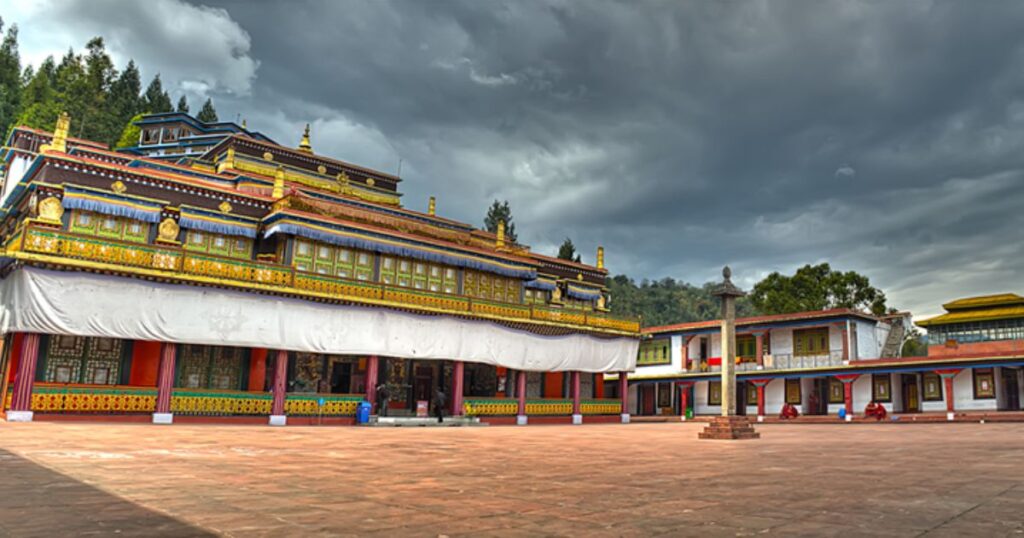
One of the most iconic historical places in Sikkim, Rumtek Monastery is the seat of the Karmapa, head of the Kagyu sect. The monastery exhibits Tibetan Buddhist art, including vibrant murals and a grand golden stupa. Its location amid verdant forests also makes it one of the most beautiful places in Sikkim.
Rumtek Monastery, perched amidst verdant hills just outside Gangtok, is the largest monastery in Sikkim and the principal seat of the Karmapa Lama of the Karma Kagyu lineage of Tibetan Buddhism. Built in the 1960s to replicate the original monastery in Tibet, Rumtek is a vibrant hub of prayer, meditation, and Buddhist art. Its golden spires, prayer wheels, and giant statue of Buddha captivate visitors, while festivals here showcase colorful masked dances and rituals.
Why to Visit Rumtek Monastery:
- Experience the spiritual ambiance of the Kagyu sect’s seat.
- Witness intricate murals, thangkas, and sacred artifacts.
- Participate in or observe traditional Buddhist ceremonies and festivals.
- Enjoy panoramic views of the surrounding forests and mountains.
2. Pemayangtse Monastery
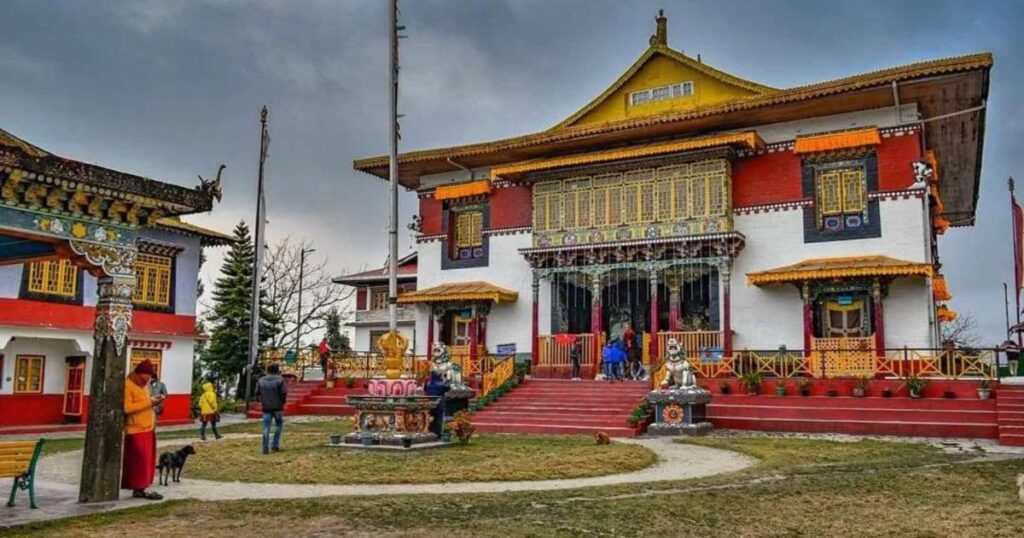
This 17th-century monastery is among the famous historical places in Sikkim, celebrated for its exquisite murals and sacred relics. Perched on a hill, it provides panoramic views and remains pivotal in Sikkim’s cultural and religious life.
This 17th-century monastery is among the oldest and most beautiful structures in Sikkim. Situated on a hilltop, Pemayangtse commands impressive views of Mt. Kanchenjunga, enhancing its serene atmosphere. It is home to rare statues of Buddhist deities and delicate murals that tell stories from Buddhist scriptures. The monastery’s peaceful surroundings make it a spiritual retreat from the bustle.
Why to Visit Pemayangtse Monastery:
- Explore one of Sikkim’s oldest and architecturally stunning monasteries.
- See rare and well-preserved murals depicting Buddhist mythology.
- Experience a tranquil environment with breathtaking Himalayan views.
- Learn about Sikkim’s religious history and cultural traditions.
3. Tashiding Monastery
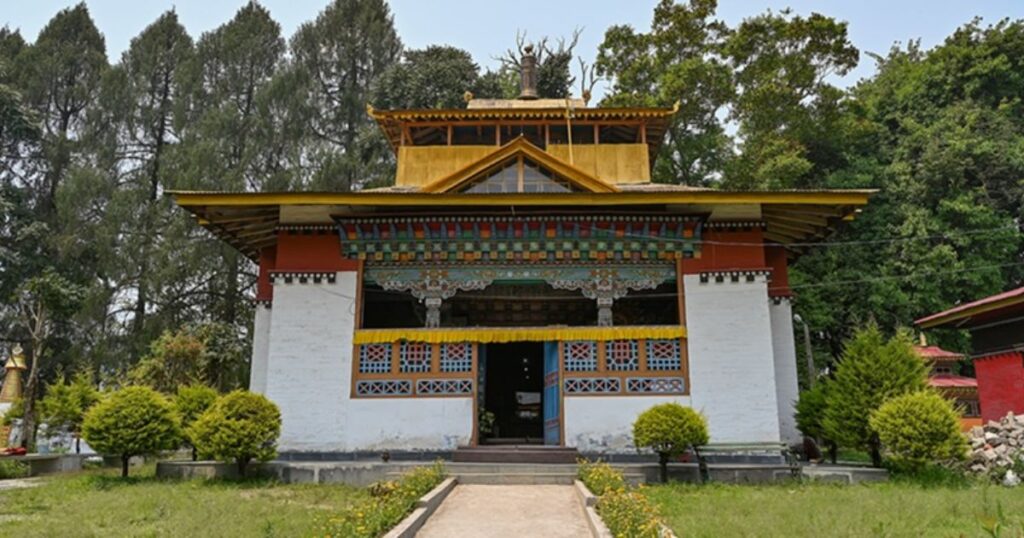
Known for its spiritual significance, Tashiding is surrounded by seven sacred hills and is a key destination for those looking to explore religious places in Sikkim. It hosts the annual Bumchu festival believed to bring blessings.
Tashiding, described as “the heart of Sikkim,” is whispered about with reverence due to the legend of its establishment by Lama Lhatsun Chempo. Nestled amidst seven sacred hills, this monastery is a focal point for spiritual seekers. The annual Bumchu festival celebrated here draws devotees who believe its holy water brings blessings. The monastery’s white and red walls and its ancient prayer wheels offer a captivating visual experience.
Why to Visit Tashiding Monastery:
- Witness a profound spiritual center for Sikkimese Buddhists.
- Attend the vibrant Bumchu festival with sacred rituals.
- Explore ancient architectural features and ritual artifacts.
- Immerse yourself in the peaceful, contemplative atmosphere.
4. Enchey Monastery
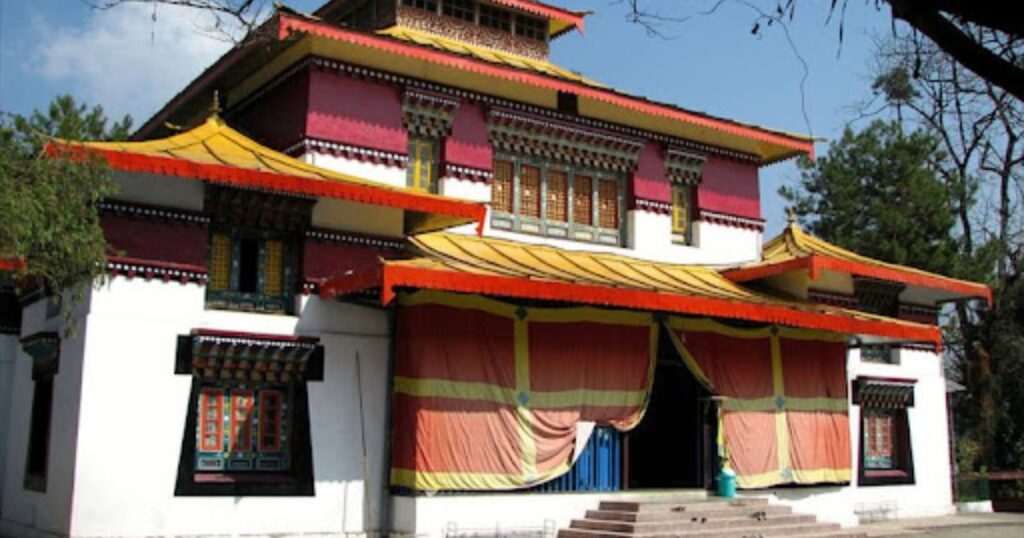
Located close to Gangtok, Enchey Monastery is a quaint spiritual retreat and an offbeat place in Sikkim. Its serene atmosphere and traditional architecture offer a glimpse into the monastic life of Sikkim.
Tucked quietly above Gangtok city, Enchey Monastery is an offbeat gem with a lineage dating back over 200 years. Small yet picturesque, it blends Bhutanese and Tibetan architectural styles, creating a serene setting for devotees and visitors alike. The monastery is less commercialized, offering a glimpse into more traditional monastic life and hosting several colorful festivals.
Why to Visit Enchey Monastery:
- Enjoy a peaceful retreat close to Gangtok’s heart.
- Discover unique architectural fusion between Bhutanese and Tibetan styles.
- Experience Buddhist rituals in a less touristy, authentic setting.
- Attend unique local festivals featuring traditional music and dance.
5. Yuksom - The First Capital
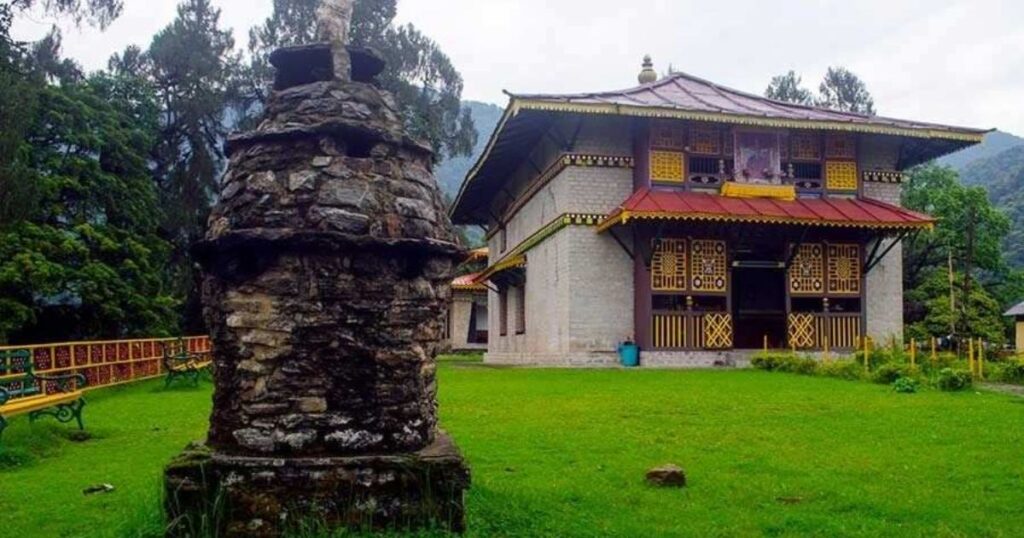
Yuksom is a historic town known as the first capital of the Kingdom of Sikkim, making it one of the pivotal historical places in Sikkim. It hosts the ancient Dubdi Monastery and offers a walk through history, perfect for travelers eager to explore the unknown places in Sikkim.
Yuksom marks the birthplace of Sikkim’s kingdom and the coronation site of its first Chogyal (king) in 1642, making it an essential stop among famous historical places in Sikkim. Visitors walk through ancient trails, visiting the Dubdi Monastery—the oldest surviving monastery in Sikkim—and explore quaint villages preserving traditional Sikkimese life. Yuksom is also the gateway for treks toward Mt. Kangchenjunga.
Why to Visit Yuksom:
- Walk through Sikkim’s first capital city rich with royal history.
- Visit the historic Dubdi Monastery with its ancient Buddhist relics.
- Explore traditional villages and experience local culture firsthand.
- Use it as a base for exploring natural beauty and trekking in the Himalayas.
6. Namgyal Institute of Tibetology
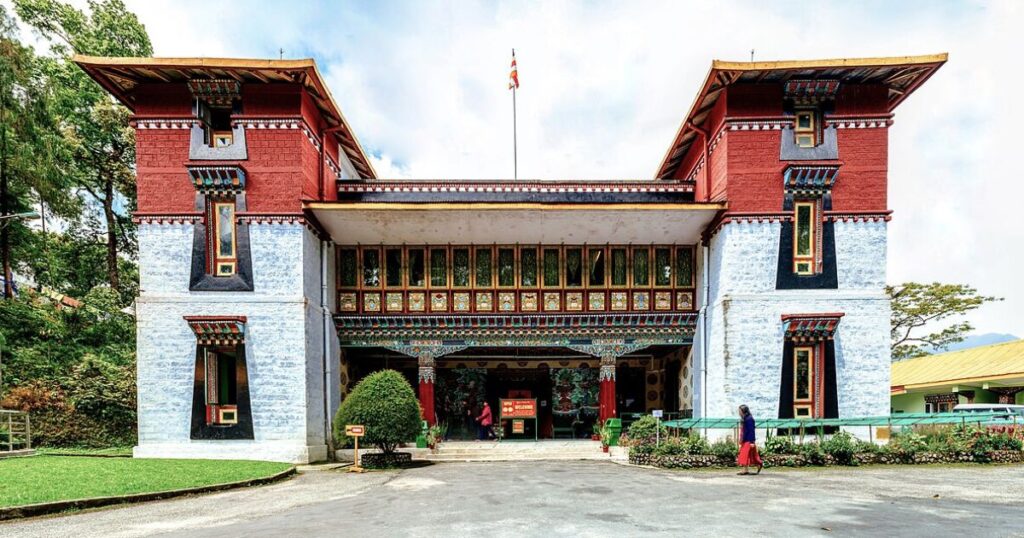
This center of Buddhist studies and culture is a repository of manuscripts, artifacts, and statues. It represents the scholarly heritage of Sikkim and serves as a museum, making it one of the best places to see in Sikkim for history lovers.
Located in Gangtok, this institute symbolizes Sikkim’s commitment to preserving Tibetan Buddhist culture and scholarship. It houses an extensive library and museum with rare manuscripts, statues, paintings, and ritual objects. The institute offers a deep dive into religious history and art, attracting scholars and cultural enthusiasts alike.
Why to Visit Namgyal Institute of Tibetology:
- Explore an unparalleled collection of Buddhist manuscripts and antiquities.
- Learn about Tibetan Buddhism, its influence on Sikkim, and the region’s history.
- Attend exhibitions showcasing traditional art forms and ritual objects.
- Visit the adjacent Do-Drul Chorten stupa for a spiritual experience.
7. Sikkim Palace (Raj Bhavan)
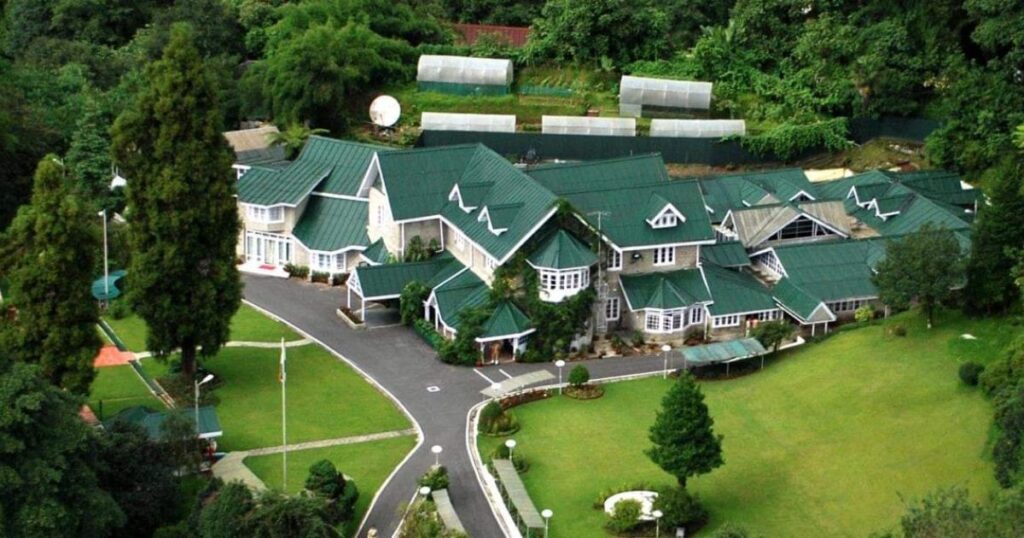
Although largely a British-era construction, the palace blends colonial architecture with local motifs and symbolizes Sikkim’s journey through political change.
Sikkim Palace is a striking example of colonial-era architecture blending with local motifs. Formerly a summer retreat for British officials during the colonial period, it now serves as the Governor’s residence. The palace’s historic gardens and unique architecture offer insight into Sikkim’s political and colonial past, adding dimension to the state’s history.
Why to Visit Sikkim Palace:
- See a unique fusion of British colonial and traditional Sikkimese architecture.
- Stroll through historic gardens with scenic views of Gangtok.
- Gain perspective on Sikkim’s political history before its merger with India.
- Appreciate a quieter, less-visited heritage site.
8. Tsomgo Lake
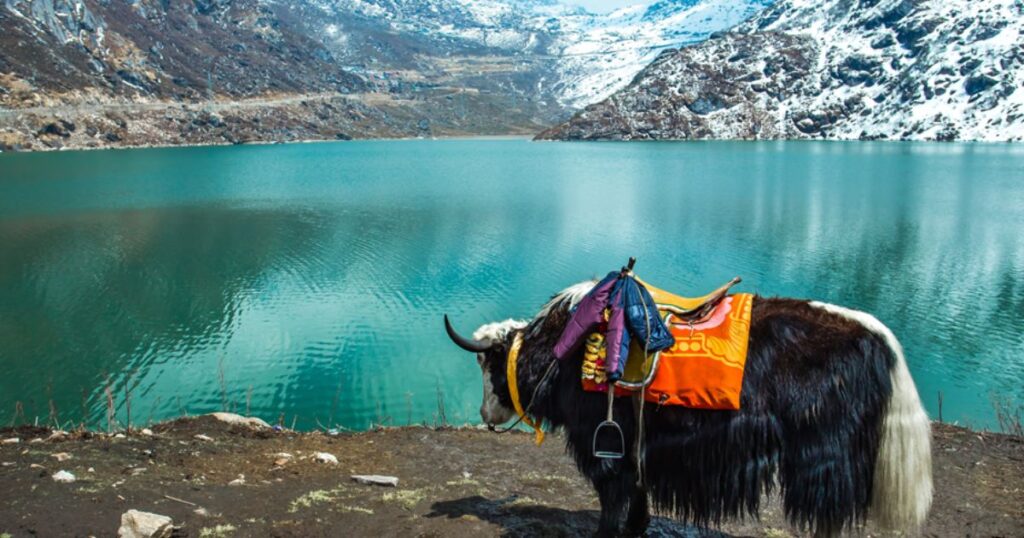
Known for its pristine beauty and spiritual legends, Tsomgo Lake is both a natural wonder and a place with mystical tales, representing one of the most beautiful places in Sikkim with a touch of mystery.
Tsomgo Lake, a glacial body surrounded by towering peaks, is not just a most beautiful place in Sikkim but also one of the mysterious places in Sikkim. Its crystal-clear waters remain frozen in winter, inspiring legends that speak of its sacredness. This lake reflects both natural beauty and spiritual significance, drawing visitors seeking serenity and mysteries.
Why to Visit Tsomgo Lake:
- Witness stunning alpine scenery and the shimmering glacial lake.
- Explore spiritual legends tied to the lake’s sanctity.
- Enjoy activities like yak rides and nature walks in a picturesque setting.
- Experience changing seasons with distinct natural beauty year-round.
9. Borong Hot Springs
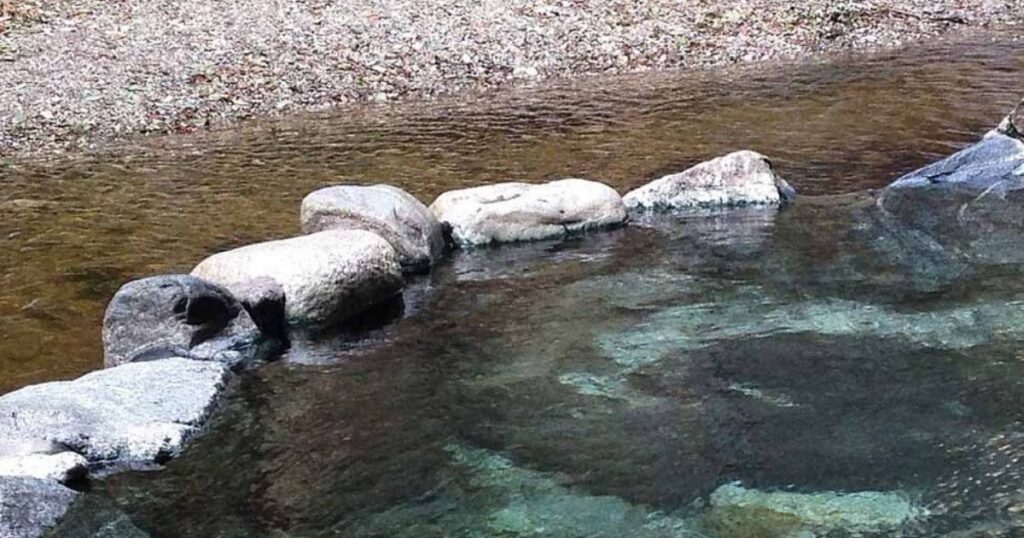
This remote spot is an unknown place in Sikkim where natural hot springs are believed to have healing properties. Its offbeat location adds to its allure for adventurous travelers.
Located in East Sikkim, Borong Hot Springs are a hidden natural wonder among the unknown places in Sikkim. Said to possess therapeutic qualities, these steaming springs attract both locals and curious travelers. Its remote location and rugged surroundings make it an offbeat place in Sikkim perfect for adventurers looking for wellness and solitude.
Why to Visit Borong Hot Springs:
- Relax in natural thermal waters reputed for healing benefits.
- Escape to a remote and tranquil location far from crowds.
- Experience an authentic, less commercialized natural attraction.
- Combine your visit with treks or exploration of nearby forests.
10. Khecheopalri Lake
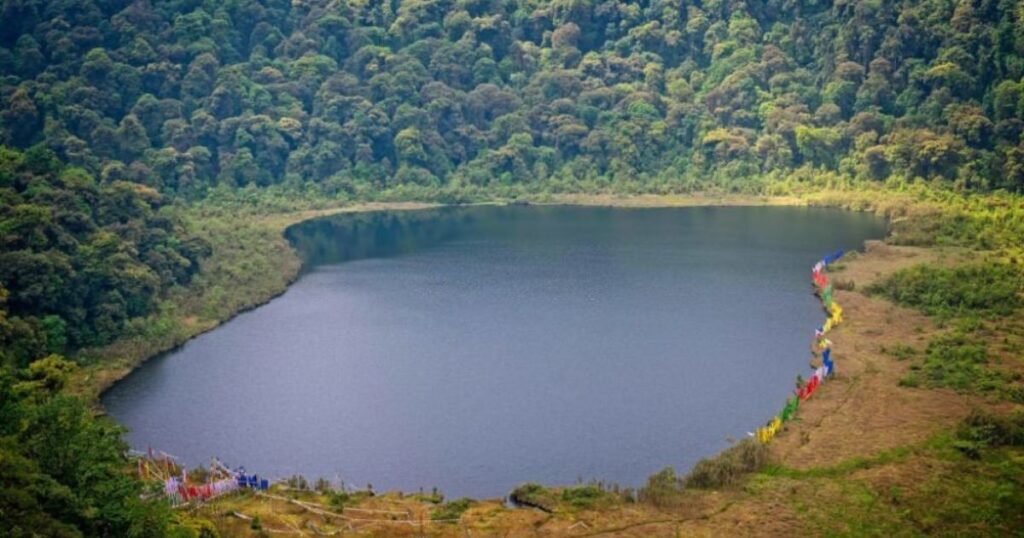
Considered sacred by Buddhists and Hindus alike, this lake is a tranquil and unexplored place in Sikkim surrounded by legends that call it the wish-fulfilling lake. It is a peaceful escape for those seeking spirituality amid nature.
Khecheopalri Lake is revered as a wish-fulfilling lake by Buddhists and Hindus alike. Surrounded by thick forests and blossoming rhododendrons, it is a tranquil unexplored place in Sikkim often overlooked by mass tourism. Boats are not allowed to preserve its sanctity, making it a pure spiritual experience enveloped in nature.
Why to Visit Khecheopalri Lake:
- Witness a sacred lake surrounded by pristine natural beauty.
- Participate in quiet prayer and meditation at this holy site.
- Enjoy birdwatching and the rich biodiversity of the area.
- Experience a unique blend of spirituality and ecology.
Experiencing Local Culture Beyond the Monasteries
- Traditional villages near Yuksom preserve Sikkimese culture through handicrafts and organic farming.
- Visitors can witness local festivals, listen to traditional music, and taste authentic cuisine.
- Engaging with locals reveals how history continues to influence everyday life in Sikkim.
- Cham dance festivals at Rumtek and Tashiding involve masked monks performing sacred stories.
- Losar (Tibetan New Year) celebrations include prayers, offerings, vibrant dances, and local cuisine.
- These festivals bring historical and religious sites to life, offering travelers an immersive cultural experience.
Also you can check out our blog about the best place to visit in November outside India so that it can help you find the best time on your next trip.
Conclusion
The historical places in Sikkim provide a compelling gateway to a world where spirituality, royalty, and mystery intertwine amidst pristine Himalayan landscapes. Whether you plan to visit famous historical places in Sikkim such as Rumtek and Pemayangtse or delve into unknown places in Sikkim like Borong Hot Springs, every site tells a story of ancient traditions and cultural richness.

Frenzy Holidays ensures a smooth and enriching travel experience from start to finish. You can visit us at Haware Centurion, S07/34, Nerul East, Sector 19A, Nerul, Navi Mumbai, Maharashtra 400706. For bookings or more information, call +91 7400453140, email [email protected], or visit www.frenzyholidays.com. So pack up and explore INDIA with frenzy holidays to have an unforgettable journey.
Historical Places in Sikkim : FAQs
What are the most famous historical places in Sikkim?
Famous historical places in Sikkim include Rumtek Monastery, Pemayangtse Monastery, Yuksom (first capital), and Tashiding Monastery, all showcasing rich cultural and spiritual heritage.
Which is the most beautiful place in Sikkim to visit?
Tsomgo Lake and Pemayangtse Monastery are among the most beautiful places in Sikkim, combining stunning natural scenery with spiritual significance.
Are there any unexplored places in Sikkim worth visiting?
Yes, unexplored places in Sikkim like Borong Hot Springs and Khecheopalri Lake offer unique natural and spiritual experiences away from tourist crowds.
What are the best places to see in Sikkim for history lovers?
The best places to see in Sikkim for history lovers include Rumtek Monastery, Namgyal Institute of Tibetology, Yuksom, and ancient temples around Gangtok.
Can you name some unknown places in Sikkim with historical significance?
Unknown places in Sikkim include Borong Hot Springs, Dzongri Trek Region, and lesser-known monasteries like Enchey and Phodong, rich in heritage and tranquility.
Which are the religious places in Sikkim that tourists frequently visit?
Religious places in Sikkim frequently visited include Rumtek, Tashiding, Pemayangtse Monasteries, and Khecheopalri Lake known for its sacred status.
What makes some places in Sikkim mysterious?
Mysterious places in Sikkim like Tsomgo Lake have legends and spiritual myths associated with them, amplifying their allure beyond natural beauty.
Are there offbeat places in Sikkim for travelers seeking solitude?
Yes, offbeat places in Sikkim include Enchey Monastery, Borong Hot Springs, and Dzongri Trek Region, which are less crowded and offer peaceful experiences.
How old are the historical places in Sikkim?
Many historical places in Sikkim, such as Pemayangtse and Rumtek Monasteries, date back to the 17th century, while Yuksom dates to the 1640s as the first capital.
Is Sikkim suitable for cultural and heritage tourism?
Absolutely. Sikkim’s blend of ancient temples, royal relics, monasteries, and natural wonders makes it ideal for cultural, religious, and heritage tourism.

